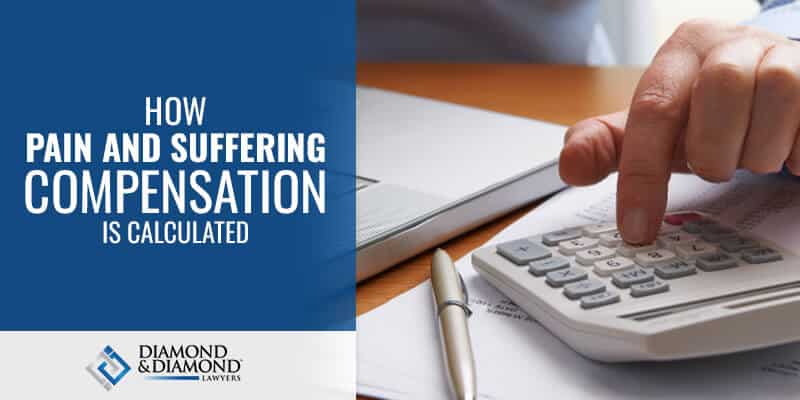Personal injury lawsuits often pursue compensation beyond the costs of medical expenses and direct damages.
This additional compensation is paid for the victims pain and suffering which they dealt with throughout recovery or on an ongoing basis.
After suffering an injury, there are two forms of damage: general and special. Special damages are anything with a directly quantifiable value, such as medical expenses, lost income, and property damage.
General damages are much harder to prove and quantify. This is where pain and suffering falls. It might include pain and discomfort in the body, inability to perform certain tasks, or other physical ailments. It can also include emotional trauma.
Although it might seem impossible to put a price on something as individual and subjective as pain and suffering, there are two common methods used to calculate a price for it in a lawsuit.
The Standard Methods For Calculating Pain And Suffering
Determining the cost of pain and suffering is a task which comes down to each individual case. Each case has unique details and circumstances which must be considered in determining pain and suffering compensation.
In a case which goes to trial, the final pain and suffering amount will be determined by the judge presiding over the case.
With that caveat, there are two methods commonly used to calculate pain and suffering compensation. These are most commonly employed by insurance agencies which frequently work in these types of lawsuits.
1. Multiplier Method
In the multiplier method, special damages are added up and multiplied. Special damages include your expenses such as medical bills, property damages, lost wages, etc.
The sum of these expenses is then multiplied by a number, usually between 1.5 and 5.
The multiple is determined in negotiation. It is often based on the severity of the pain and suffering, the nature of the injuries, the impact on day to day life, and how much liability the other party had in the incident.
Determining the multiple can lead to tense negotiations when working towards a settlement agreement.
2. Daily Rate (Per Diem)
Another method used to assess pain and suffering compensation is applying a daily rate.
In this method, a daily rate is determined (often based on a person’s income before the accident,) and this rate is applied to every day the victim endured the pain and suffering created by the accident.
It is common to ask for your daily earnings pre-accident as a daily rate.
Get The Best Settlement With Some Help From A Personal Injury Lawyer

Ready to pursue the justice and compensation you are owed?
The best way to determine what your pain and suffering compensation is worth is to consult a qualified and experienced personal injury lawyer.
A lawyer will be the best qualified to help you assess the situation and calculate an estimate of possible pain and suffering compensation.
Schedule a free consultation today to get things underway. Don’t leave the money you’re owed simply sitting on the table.














